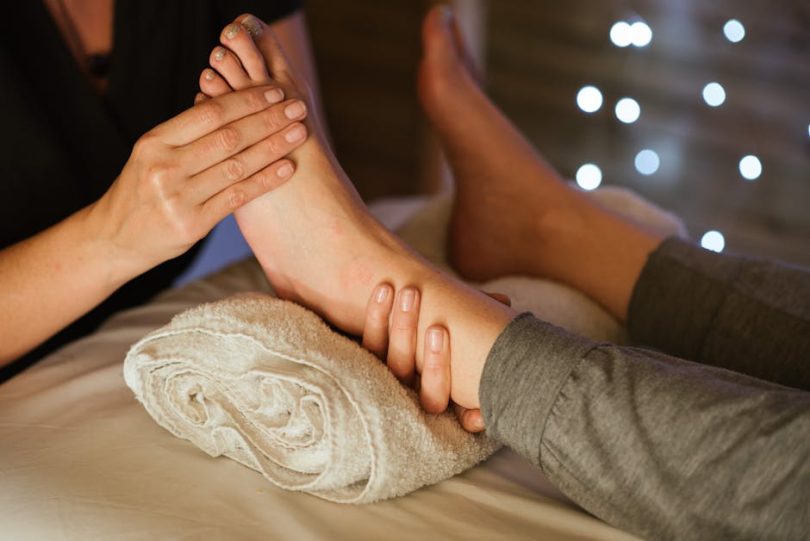Finding Inner Peace: Tips and Techniques
In today’s fast-paced world, finding inner peace can often feel like a daunting task. Between work, family, and countless other responsibilities, stress can build up quickly. However, achieving a sense of inner tranquility is not only possible but also essential for a healthy and balanced life. This blog post will explore effective tips and techniques to help you find inner peace, supported by statistics, examples, and actionable advice.
This post contains Amazon affiliate links, meaning I may earn a small commission if you purchase through my links, at no extra cost to you. Note: We aim to provide accurate product links, but some may occasionally expire or become unavailable. If this happens, please search directly on Amazon for the product or a suitable alternative.
Understanding Inner Peace
Inner peace is a state of mental and emotional calmness, free from anxiety and stress. It is not just about being calm in the absence of conflict but maintaining tranquility even in the midst of challenges. According to a study by the American Psychological Association, 75% of adults reported experiencing moderate to high levels of stress in the past month. This highlights the importance of finding ways to achieve inner peace in our daily lives.
Benefits of Inner Peace
Achieving inner peace comes with numerous benefits:
- Improved mental health
- Better physical health
- Enhanced relationships
- Increased productivity
For example, a study published in the Journal of Behavioral Medicine found that individuals who practice mindfulness and meditation, essential components of inner peace, experience lower levels of cortisol, the stress hormone.
Techniques to Find Inner Peace
Meditation
Meditation is one of the most effective ways to achieve inner peace. It involves focusing your mind on a particular object, thought, or activity to train attention and awareness. Here’s how you can get started:
- Find a quiet place where you won’t be disturbed.
- Sit comfortably with your back straight.
- Close your eyes and take deep breaths.
- Focus on your breathing. If your mind wanders, gently bring it back to your breath.
- Start with a few minutes each day and gradually increase the duration.
Research shows that regular meditation can significantly reduce stress and anxiety. A study by Harvard Medical School found that eight weeks of meditation can lead to measurable changes in brain regions associated with memory, self-awareness, and compassion.
Mindfulness
Mindfulness involves being fully present in the moment without judgment. It helps you become more aware of your thoughts and feelings, allowing you to manage them better. Try these tips to incorporate mindfulness into your daily life:
- Practice mindful breathing: Take a few minutes each day to focus on your breath.
- Engage in mindful eating: Pay attention to the taste, texture, and smell of your food.
- Take mindful walks: Observe your surroundings and appreciate the present moment.
A study published in the journal Psychological Science found that mindfulness can reduce stress and improve overall well-being. Participants who practiced mindfulness reported lower levels of negative emotions and higher levels of life satisfaction.
Positive Affirmations
Positive affirmations are powerful statements that can help reprogram your mind to focus on positive outcomes. Repeating affirmations daily can boost your confidence and reduce stress. Here are some examples:
- “I am at peace with myself and the world around me.”
- “I am in control of my thoughts and emotions.”
- “I choose to focus on the positive aspects of my life.”
Studies have shown that positive affirmations can improve mental health and increase resilience. For instance, research published in the journal Social Cognitive and Affective Neuroscience found that self-affirmation activates brain regions associated with reward and positive valuation.
Physical Exercise
Regular physical exercise is not only good for your body but also for your mind. Exercise releases endorphins, which are natural mood lifters. Here are some ways to incorporate exercise into your routine:
- Engage in aerobic activities like running, swimming, or cycling.
- Practice yoga, which combines physical movement with mindfulness and meditation.
- Take regular breaks to stretch and move around, especially if you have a sedentary job.
According to the Anxiety and Depression Association of America, exercise can reduce stress, improve mood, and enhance overall mental health. Even a 10-minute walk can increase energy and reduce tension.
Connecting with Nature
Spending time in nature can have a calming effect on the mind and body. Nature walks, hiking, or simply sitting in a park can help you feel more grounded and peaceful. Try these tips to connect with nature:
- Take regular walks in your local park or nature reserve.
- Engage in outdoor activities like gardening or birdwatching.
- Practice mindfulness while in nature, paying attention to the sights, sounds, and smells around you.
Research published in the journal Environmental Health and Preventive Medicine found that spending time in nature can reduce cortisol levels and lower blood pressure. Another study by the University of Exeter found that people who spend at least 120 minutes a week in nature report higher levels of well-being.
Actionable Tips for Daily Practice
Create a Peaceful Environment
Your surroundings can significantly impact your inner peace. Create a peaceful environment at home by:
- Decluttering your living space
- Incorporating calming colors and natural elements
- Playing soothing music or nature sounds
Practice Gratitude
Gratitude can shift your focus from what’s lacking to what you have. Keep a gratitude journal and write down three things you are grateful for each day. Research published in the journal Psychotherapy Research found that practicing gratitude can improve mental health and increase happiness.
Limit Screen Time
Excessive screen time can contribute to stress and anxiety. Set boundaries for your screen time by:
- Taking regular breaks from digital devices
- Setting specific times for checking emails and social media
- Engaging in offline activities like reading, drawing, or spending time with loved ones
Seek Professional Help
If you find it challenging to achieve inner peace on your own, consider seeking professional help. Therapists and counselors can provide valuable tools and techniques to help you manage stress and find inner tranquility.
Conclusion
Finding inner peace is a journey that requires consistent effort and practice. By incorporating techniques like meditation, mindfulness, positive affirmations, physical exercise, and connecting with nature, you can achieve a state of calm and balance. Remember, the path to inner peace is unique for each individual, so find what works best for you and make it a part of your daily routine. With dedication and perseverance, inner peace is within your reach.
Start your journey to inner peace today and experience the profound benefits it can bring to your life.







